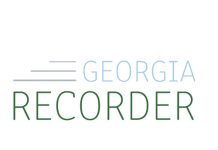This post was originally published on this site.
It doesn’t look much like a castle in Transylvania, but step inside Emory University’s Stuart A. Rose Manuscript, Archives, and Rare Book Library, and you’ll find a place where Dracula would feel right at home.
The library houses the John Moore Bram Stoker Collection, which instructional archivist Shanna Early calls “one of the best collections of Bram Stoker and Dracula-related materials in the world.”
Moore — an avid collector of all things tied to Stoker’s 1897 horror masterpiece — chose Emory as the “final resting place” for his astonishing collection of artifacts, which includes signed first editions, vintage movie posters, theatrical playbills, postage stamps, trading cards, and even Halloween masks and makeup kits. The archives trace the story of Dracula from the vampire books and plays that preceded Stoker’s novel to the pop culture impact of the book and its many film adaptations.
“I don’t think his family ever expected it to have the kind of lasting impact that it had,” says Early of Stoker and his most enduring work. “Really, Stoker wrote as a hobby. And so, he enjoyed writing — he always wrote — but he was kind of looking to earn a little extra money for his family on the side. He saw himself primarily as a theatre manager.”
Some of the materials from the Moore Collection are currently on display as part of an exhibit called “Striking Characters: Typewriters, Literary Worlds, and the Art of Tim Youd.” Youd is a California-based artist who created The 100 Novels Project, in which he re-types entire novels on just a couple of sheets of paper.
“The book is a black rectangle inside of the white rectangle,” explains Youd, “and I wanted to ‘crush’ the book and get all the text and the weight of it and the texture and everything there on one page. As a visual artist, [I was] trying to come up with a way to ‘draw’ the book.”
Because of Emory’s Dracula collection, Youd decided to include Dracula in his project and has spent the past few weeks at Emory typing the novel — in red ink, of course. The exhibit surrounding his live typing uses both his art and materials from the school’s archives to tell the story of the cultural importance of the typewriter.
“We really wanted to use our archives and Tim’s work to tell the story of how influential the typewriter was,” says exhibit co-curator Hannah Griggs.
The exhibit will remain on view in the Woodruff Library’s Schatten Gallery through December 20 — for more information, click here.




